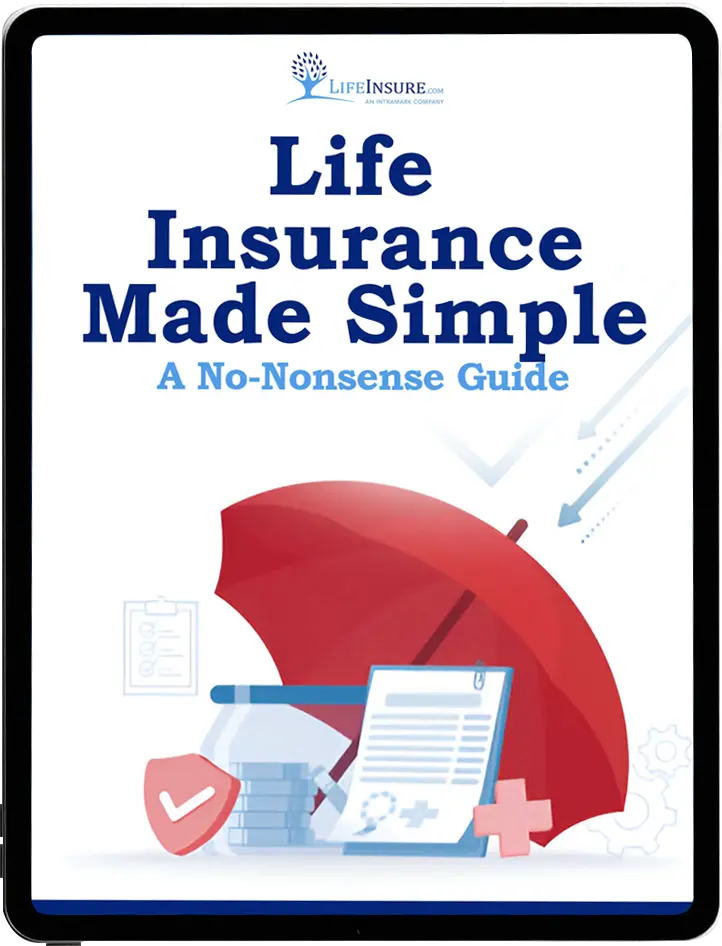Protect Your Income with Disability Insurance
In the complex world of medical practice, resident physicians often overlook a crucial aspect of their financial security—resident physician disability insurance. As residents grapple with demanding schedules and intense learning environments, the potential for illness or injury that could impede their ability to work is far from negligible.
Easy Article Navigation
This article aims to enlighten resident physicians about the importance of disability insurance, the factors to consider when choosing a policy, and common mistakes to avoid.
When you are ready to research companies and policies, we can provide you with quotes from the major disability insurance companies that offer high-quality, individual-own-occupation disability income policies. Our quotes are presented in an easy-to-follow side-by-side comparison of important policy features, financial ratings, and premiums. This comparison takes the guesswork out of the decision, one that becomes much easier when you are armed with the right information.
As national insurance brokers representing the major companies offering disability insurance, we are not bound to a single company. Our focus is always on finding the best policy fit for our clients based on coverage and cost. We will never push any one company over another and will always present you with all the information you need to choose the right policy for you...without any sales pressure.
Understanding Disability Insurance
Disability insurance is a type of coverage that replaces a portion of your income if you become unable to work due to illness or injury. It comes in two forms—short-term and long-term—each covering different periods of disability.
Short-term disability insurance typically covers a few months up to a year, while long-term disability insurance covers a longer period, often several years or until retirement.
There are several key terms and concepts to understand when discussing disability insurance. The elimination period is the waiting time before benefits kick in. The benefit period is how long the policy will pay benefits.
Disability definitions differ between ‘own-occupation,’ which covers if you can’t perform your specific job duties, and ‘any-occupation,’ where you’re only covered if you can’t work in any job reasonably suitable for you. Also, policies distinguish between partial and total disability.
Why Resident Physicians Need Long Term Disability Insurance
Resident physicians face unique risks due to long working hours, high-stress levels, and exposure to potential health hazards. While residents may feel invincible, the reality is that illness or injury can strike anyone, regardless of age or fitness level.
The financial impact of a disability can be devastating for resident physicians. With hefty student loans to pay off and potential dependents to support, losing income could lead to financial hardship. Moreover, considering the high earning potential in their future, protecting this future income is crucial.
Getting disability insurance early also has its benefits. Premiums are generally lower for younger and healthier individuals, and securing coverage before any potential health issues arise can ensure you’re covered.
Factors to Consider When Choosing a Policy that is Right for You
Coverage Amount
When selecting a disability insurance policy, one of the primary factors to consider is the coverage amount. This should ideally replace approximately 60-70% of your income, ensuring that you can maintain your lifestyle and meet financial obligations even in the event of a disability. It's essential to calculate your living expenses, loan payments, and potential future needs to determine the appropriate coverage amount.
Policy Features and Riders
Different policy features and riders can enhance the coverage provided by your disability insurance. A future increase option allows you to increase your coverage as your income rises, without having to undergo additional medical underwriting. A cost-of-living adjustment rider helps your benefits keep pace with inflation, ensuring that your purchasing power is maintained over time. Residual disability benefits can provide a payout even if you can work but your income is reduced due to your disability.
Employer Sponsored vs Individual
It's crucial to weigh the pros and cons of employer-sponsored policies and individual policies. While employer-sponsored coverage may be more affordable and convenient, it often has limitations, such as reduced coverage amounts or restrictive definitions of disability. Additionally, if you leave your employer, you may lose your coverage. Individual policies generally provide more comprehensive coverage and portability, but they may come with higher premiums.
Comparing Insurance Providers & Brokers
Before choosing a disability insurance policy, it's important to compare various insurance providers. Consider factors such as the provider's reputation, financial stability, and customer service. Look for reviews and testimonials from other physicians to gain insight into the provider's responsiveness and claims-handling process. Comparing multiple providers can help you find the best policy that meets your needs and preferences.
Premium Costs & Payment Options
When selecting a disability insurance policy, one of the primary factors to consider is the coverage amount. This should ideally replace approximately 60-70% of your income, ensuring that you can maintain your lifestyle and meet financial obligations even in the event of a disability. It's essential to calculate your living expenses, loan payments, and potential future needs to determine the appropriate coverage amount.
How to Apply for Long-Term Disability Insurance
Applying for disability insurance involves researching and selecting an insurance provider and then going through the application process. This often includes medical underwriting, where your health status is assessed, and financial underwriting, where your income and financial needs are evaluated.
To ensure a successful application, be honest and thorough in providing the required information. Understand the policy terms and conditions before committing, and don’t hesitate to ask questions or seek professional advice.
Rather than spend important time contacting various insurance companies for disability products and pricing, it makes better financial sense to contact an experienced and reputable insurance broker that can offer advice and submit your application to multiple companies in order to find the best solution for your circumstances and budget.
Mistakes to Avoid and when buying Long-Term Disability Insurance
- Underestimating the need for coverage: One common mistake resident physicians make is underestimating the likelihood of experiencing a disability during their careers. Disabilities can result from various causes, including accidents, illnesses, and mental health conditions. Recognizing the risks and taking steps to protect your income is a crucial aspect of financial planning.
- Overlooking policy details: Many physicians make the mistake of not thoroughly reviewing the terms and conditions of their disability insurance policies. It’s essential to understand the exact coverage, exclusions, and riders to avoid unpleasant surprises during the claims process. Make sure to read the fine print and ask your insurance agent or financial advisor to clarify any confusing aspects.
- Failing to update coverage as income and needs change: As your career progresses and your income grows, your financial needs will likely change. It’s important to periodically review and update your disability insurance coverage to ensure that it remains adequate for your current situation. This may involve increasing the benefit amount, adding riders, or adjusting the elimination or benefit periods.
- Relying solely on employer-sponsored coverage: While employer-sponsored disability insurance can be a valuable benefit, it often has limitations and may not provide enough coverage to meet your needs. Additionally, if you leave your employer, you may lose your coverage. It’s wise to consider supplementing employer-sponsored coverage with an individual policy to ensure comprehensive protection and portability.
- Not comparing multiple insurance providers: Selecting the first insurance provider you come across or choosing one based solely on price can be a costly mistake. It’s important to compare multiple providers and evaluate factors such as reputation, financial strength, and customer service. This can help you find a policy that offers the best combination of coverage, cost, and peace of mind.
- Ignoring riders and additional features: Disability insurance policies offer various riders and additional features that can enhance your coverage and provide added protection. Neglecting these options may result in gaps in coverage or missed opportunities to tailor the policy to your specific needs. Some examples of riders to consider include the cost-of-living adjustment, future increase option, and residual disability benefits.
- Delaying the purchase of disability insurance: Waiting too long to purchase disability insurance can be risky, as your health and age can impact your eligibility and premium costs. Securing coverage early in your career when you’re young and healthy can lead to lower premiums and ensure that you’re protected against unforeseen events. Additionally, some policies offer guaranteed renewability, which ensures that your coverage remains in force as long as you continue paying the premiums, regardless of changes in your health status.
By avoiding these common mistakes and adopting best practices, you can ensure that your disability insurance policy provides adequate protection and financial security throughout your medical career.
Frequently Asked Questions
Short-term disability insurance provides coverage for a limited period, typically ranging from a few months up to a year. It is designed to replace a portion of your income during the initial phase of a disability. Long-term disability insurance covers a more extended period, often lasting several years or until retirement age.
A general rule of thumb is to aim for a coverage amount that replaces approximately 60-70% of your income. This should help you maintain your lifestyle and meet financial obligations, such as loan payments and living expenses, even if you become disabled and unable to work.
Own-occupation disability insurance covers you if you’re unable to perform the duties of your specific occupation due to illness or injury. In contrast, any-occupation disability insurance only provides coverage if you’re unable to work in any job reasonably suitable for you based on your education, training, and experience. Own-occupation policies generally offer more comprehensive protection, especially for specialized professions like physicians.
Yes, you can have both employer-sponsored and individual disability insurance policies. In fact, it’s often recommended to supplement employer-sponsored coverage with an individual policy to ensure comprehensive protection and portability. Keep in mind that benefit coordination between the two policies may apply, meaning that the total benefits received from both policies combined may be limited to a certain percentage of your income.
Several factors can influence the cost of disability insurance premiums, including your age, health, occupation, elimination period, benefit period, coverage amount, and policy features or riders. Younger and healthier individuals generally pay lower premiums, while those with high-risk occupations or pre-existing health conditions may face higher premium costs. Choosing a longer elimination period or a shorter benefit period can also help reduce premium costs.
Have More Questions?
For more information about Long-Term Disability Insurance for physicians, call us during normal business hours at 866-868-0099 or contact us through our website at your convenience. Remember, you cannot buy long-term disability insurance cheaper than today!
Protect Your Income with Disability Insurance
Last Updated on July 13, 2024 by Richard Reich


